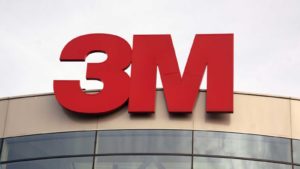It’s worth noting that quality blue-chip stocks don’t usually trade at a valuation gap. However, there can be exceptions, and this column focuses on undervalued stocks with the highest dividends. If I look at these stocks with a time horizon of 24 to 36 months, total returns are likely to be robust. I believe the stocks discussed can deliver total returns of 70% to 100% in the next 36 months. This would imply comfortably beating index returns and inflation.
Let’s discuss the fundamentals and other reasons to like these dividend stocks.
Lockheed Martin (LMT)

Lockheed Martin (NYSE:LMT) is among the stocks with the highest dividends to buy at current levels. With tailwinds for the defense sector, a forward price-earnings ratio of 16.4 looks attractive for LMT stock. Also, considering the point that the stock has been sideways for the last 12 months, a big breakout on the upside seems imminent.
Of course, LMT stock has an attractive annual dividend payout of $12.6, translating into a robust yield of 2.83%. Given the order book and cash flow visibility, I believe that dividends will grow healthy in the coming years.
Regarding the fundamentals, Lockheed reported an order backlog of $156 billion as of Q3 2023. The backlog has been swelling and provides clear revenue visibility. Further, Lockheed has guided for free cash flow of $6.2 billion for the year. FCF will likely be similar or higher in 2024. Therefore, there is ample headroom for dividend growth as cash flows swell.
I must add here that as Lockheed expands international collaboration, revenue growth is likely to accelerate. This will support stock upside from undervalued levels.
Chevron Corporation (CVX)

Chevron Corporation (NYSE:CVX) is among the stocks with the highest dividends, and CVX stock trades at an attractive valuation. After a downside of 16% year-to-date, I believe the stock has bottomed out. Further, with organic and acquisition-driven growth, dividends will likely continue to swell. Currently, CVX stock offers an annual dividend of $6.04 per share, which translates into a yield of 4.08%.
An important point to note is that even with some correction in oil, Chevron reported operating cash flow of $9.7 billion for Q3 2023. This implies an annualized OCF potential of $40 billion. Once the acquisition of Hess Corporation (NYSE:HES) is completed, cash flows will swell further.
This will provide Chevron with the flexibility to make aggressive investments coupled with an increase in shareholder returns. I must add that Chevron has an investment-grade balance sheet, and with low break-even assets, the long-term cash flow outlook is robust.
3M Company (MMM)

There is no doubt that 3M Company (NYSE:MMM) is a quality blue-chip stock. However, sentiment has been negative, and MMM stock has declined by 20% in the last 12 months. At a forward price-earnings ratio of 10.7, the stock looks attractive. Besides the potential for capital gains, MMM stock offers an annual dividend of $6 per share, which translates into a yield of 6.18%.
In terms of value creation, there are two important points to note. First, 3M Company reported an adjusted free cash flow of $1.9 billion for Q3 2023. The Company’s annual FCF potential is at $8 billion, even with sales growth. As an innovator in the safety, healthcare, consumer, and electronic business, I expect 3M to bounce-back in terms of stabilizing and potentially accelerating growth.
Further, 3M has decided to spin-off the healthcare business. The transaction is likely to be completed in the first half of 2024. This is likely to translate into value unlocking. In Q3 2023, the healthcare segment reported sales growth of 2.4% with an operating margin of 22.2%. All other segments had reported sales de-growth for the quarter.
On the date of publication, Faisal Humayun did not hold (either directly or indirectly) any positions in the securities mentioned in this article. The opinions expressed in this article are those of the writer, subject to the InvestorPlace.com Publishing Guidelines.
Faisal Humayun is a senior research analyst with 12 years of industry experience in the field of credit research, equity research and financial modeling. Faisal has authored over 1,500 stock specific articles with focus on the technology, energy and commodities sector.
